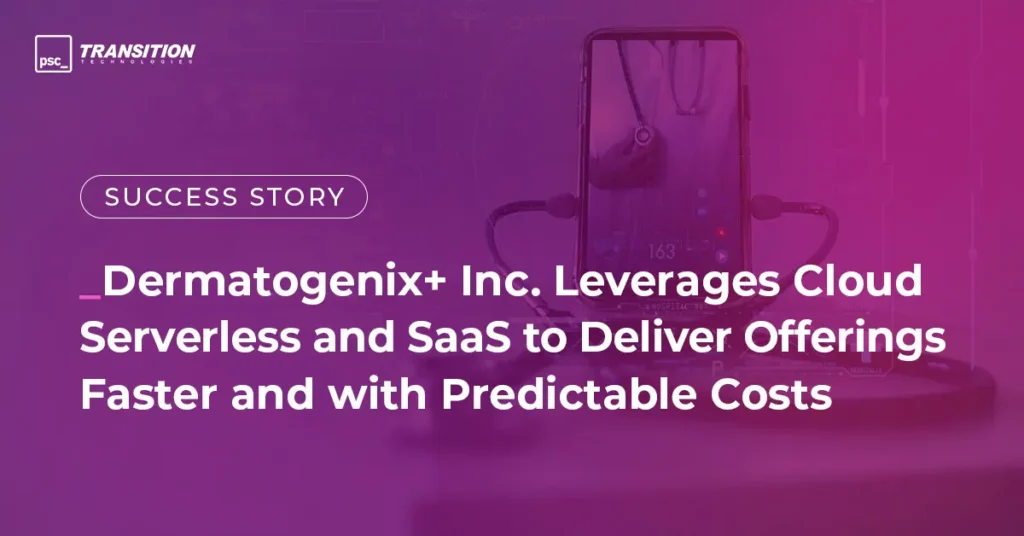How to leverage AWS key benefits to get real business value with Cloud Application Modernization

It’s not rocket science, and it’s pretty obvious that businesses need to keep up with the fast-changing digital landscape to remain competitive. Cloud application modernization is a critical strategy for updating outdated and legacy systems to leverage cloud computing benefits like those offered by Amazon Web Services(AWS).
With this blog post, I decided to explore ones directly related to application modernization and the overall advantages of the cloud. Also, I will address the most common question of whether it is worth to modernize existing apps?

What’s all the fuss about? Application Modernization importance
In today’s rapidly changing digital environment, staying competitive requires not just innovation but also a willingness to reevaluate and modernize existing operational frameworks. However, embarking on the journey of Application Modernization and Cloud Migration brings forth a myriad of questions and concerns for Business and IT leaders alike:
Q1: Will the investment in Cloud App Modernization pay off?
A chief deterrent to a full migration is the uncertainty about whether the time and effort invested will yield commensurate results. Business leaders often ponder:
Will we see further productivity gains?
This question underscores the apprehension about tangible outcomes versus the perceived risk and effort involved in such a significant transformation.
Q2: How will it affect our current operations?
There’s a valid concern about potential workflow disruptions and the impact on customer service during the transition period. Employees accustomed to certain processes may experience a steep learning curve during the transition. Communicating transparently with teams, addressing their concerns, and providing adequate training is crucial. Additionally, we must assess how this shift will affect customer service:
Will there be any downtime during the cloud applications migration?
How will it impact response times?
Ensuring a smooth transition while minimizing disruptions is a key.
Q3: Can our organization handle the technical and cultural shifts required?
The move to the cloud involves technical changes but also requires a cultural shift within the organization, embracing new ways of working and thinking. Teams need to adapt to agile development practices, collaborative tools, and a Cloud Native mindset. Leaders play a crucial role in fostering this cultural transformation. Creating a supportive environment where employees feel empowered to explore innovative solutions is essential. As we navigate this transition, we’ll need to bridge the gap between legacy practices and the future of Cloud Application Development.
Q4: Are we equipped enough to manage security and compliance in the cloud?
Security and compliance are paramount, especially for organizations in regulated industries. The thought of migrating sensitive data to the cloud raises concerns about vulnerability and regulatory compliance.
How do we ensure data privacy?
Is our cloud service provider compliant with industry standards?
We must establish robust security protocols, encryption mechanisms, and access controls. Regular audits and vulnerability assessments are essential. Additionally, educating our teams about best practices for security is crucial. The cloud offers immense benefits, but we must balance innovation with risk mitigation.
Q5: Do we have the right skills and resources?
The skills gap is a real challenge, with organizations wondering if they have the necessary expertise or can acquire it quickly enough to leverage cloud technologies effectively.
Do we have developers skilled in cloud native technologies who know how to navigate the maze of cloud apps and cloud services?
Can our operations team effectively manage a cloud environment or hybrid cloud?
Investing in training and upskilling is vital. We must equip our workforce with the right skills through internal training programs or external partnerships.
Additionally, consider collaborating with external experts or cloud service providers to fill any gaps. The success of a modernization strategy hinges on having the right people with the proper knowledge at every step of the journey.
Business value of Cloud Applications Modernization
By addressing these concerns head-on and providing data-driven insights and real-world examples of successful migrations, we can help demystify the process and illustrate the compelling business value of application modernization. This journey, while complex, offers a strategic pathway to enhanced efficiency, innovation, and competitiveness in the digital age.

Source: Hackett Group’s report
It is worth noting that top performers cite more goals for migrating as they have a broader perspective on the potential benefits of migration to AWS. Organizations with a more strategic approach to technology are more effective in their use of the cloud and reap greater rewards as a result (Top Performers).
Benefit 1: Enhanced operational efficiency and cost savings
One of the immediate benefits of application modernization is the significant reduction in operational costs.
The most common goal among overall respondents for moving applications to AWS is to reduce or optimize costs (65%), very closely followed by product and service enhancement (63%).
The Hackett Group’s report highlights an average 20% reduction in total technology infrastructure costs post-migration to AWS. Top performers achieve a 47% savings in total infrastructure costs. This cost efficiency stems from the cloud’s pay-as-you-go model, which eliminates the need for upfront capital investment in physical infrastructure and allows for more precise scaling of resources according to demand.
 Source: Hackett Group’s report
Source: Hackett Group’s report
As a result of migrating to the cloud, 80% of applications are now meeting their service-level agreements, which is a significant improvement of 23% compared to their state before the migration.
Benefit 2: Increased staff productivity and focus on innovation
Migrating to AWS has shown a remarkable 66% increase in the number of virtual machines an administrator can manage, leading to a 17% reallocation of staff from nonstrategic to strategic roles. This shift not only boosts productivity but also enables businesses to focus more on innovation and less on maintaining existing systems. Developers, in particular, benefit from a 29% increase in time spent on new features and functionalities, thanks to AWS’s developer tools that automate and simplify coding tasks.
Benefit 3: Accelerated time-to-market
The agility afforded by application modernization is a game-changer for businesses. The Hackett Group’s study reports a 43% faster time to market for new applications and services. This speed is achieved through the cloud’s flexible environment, which supports rapid development, testing, and deployment cycles, enabling businesses to respond swiftly to market opportunities and customer needs.
Benefit 4: Actionable insights from data thanks to the use of AI
Adding a new dimension to the accelerated time-to-market, AWS customers benefit from “a 60% decrease in the time required to produce actionable insights” once data becomes available. This rapid decision-making process is one of the major benefits of AWS’s robust computing capabilities. As businesses increasingly look to leverage artificial intelligence (AI) to drive innovation and maintain a competitive edge, the importance of managing large volumes of data cannot be overstated.
The capability to process and analyze data at scale forms the bedrock of AI solutions, which are at the forefront of many companies’ strategic initiatives. AWS’s cloud services not only facilitate this critical data management but also provide the computational power necessary to fuel advanced AI algorithms, turning raw data into valuable insights and intelligent action faster than ever before.

Benefit 5: Improved security and operational resilience
Security is a paramount concern for any digital operation, and modernizing applications with AWS significantly enhances an organization’s security posture. The report indicates a 45% decrease in security-related incidents attributed to AWS’s comprehensive security features that protect against threats and ensure data integrity. Additionally, operational resilience is strengthened by a 37% reduction in downtime, ensuring high availability and reliability of services.
Benefit 6: Supported sustainability goals and improved energy efficiency
Application modernization also contributes to environmental sustainability by reducing energy consumption. The migration to AWS results in a 25% reduction in energy use, highlighting the efficiency of cloud infrastructure and its role in supporting businesses’ sustainability goals.
AWS cloud infrastructure use and its real-world impact
If you want to learn how to maximize the benefits of the cloud, explore our customer’s success story. Discover how Dermatogenix+ Inc. and TT PSC partnered to define technical and non-functional requirements for EczemaQ, a pilot mHealth app, and configure an AWS serverless platform, integrate with GitHub and Figma, and create a self-empowering platform for stakeholders.

The conclusion of AWS key benefits with Cloud Apps Modernization
Application modernization represents a strategic investment in the future of business operations, offering a spectrum of benefits from cost savings and improved efficiency to enhanced security and innovation potential. Moreover, application modernization is often a key enabler for introducing Artificial Intelligence (AI). The insights from The Hackett Group’s report on AWS migration underscore the transformative power of modernizing applications, highlighting how businesses can leverage cloud computing to stay competitive, agile, and forward-thinking in the digital age.
As businesses continue to navigate the complexities of digital transformation, the application modernization journey with AWS offers a roadmap to achieving operational excellence, sustainability, and strategic growth. Embracing these modernization efforts not only propels organizations toward their future goals but also sets a foundation for sustained success in the ever-changing digital landscape.

Data source: Hackett Report
